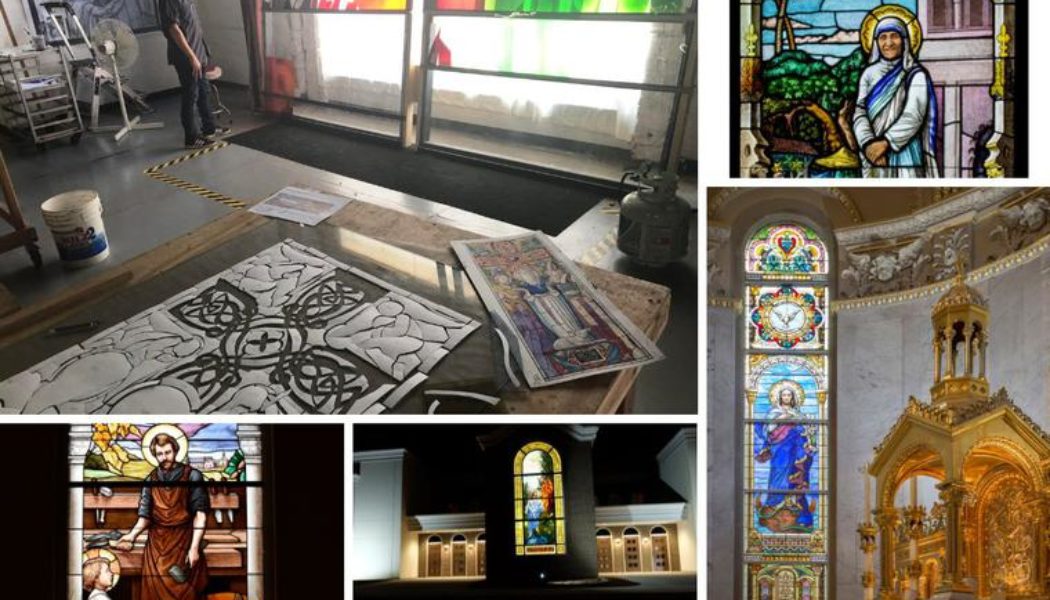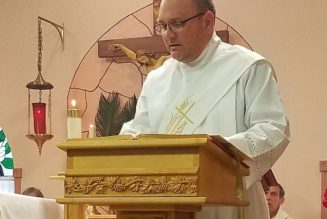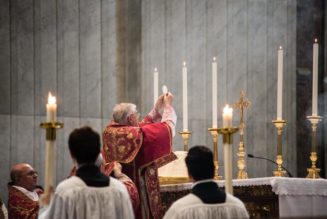
Artists discuss the colorful catechism behind their creations that reflect faith and history.
“In general, the faithful in the United States have rediscovered the rich tradition of stained glass. When they compare it to the last 50 years, they find many of our churches wanting,” Duncan Stroik, award-winning architect, author and professor of architecture at the University of Notre Dame, told the Register. “It is consistent with their preferences in architecture and liturgy.”
“Modern has been out — anything that smacks of the ’50, ’60s, ’70s. No one seems interested in reviving any of that,” agreed Joseph Beyer, artist and president of the Beyer Stained Glass Studio (BeyerStudio.com) in Philadelphia. “The Munich school windows retain popularity because they are so beautiful and mesh so well with the traditional church design that has completely taken over the last couple of decades. I used to have churches very modern above the Mason-Dixon line. All that has changed in the last 20 years. I have no plans for any churches not in the basilica style — many cruciform shape.”
Similarly, Kevin Grabowski, national projects director of Conrad Schmitt Studios (ConradSchmitt.com) in New Berlin, Wisconsin, says “more people prefer that traditional Munich stained-glass style. People really connect to them.”
For one of his current projects, Beyer is drawing window designs for the renovation of St. Thomas More Cathedral in Arlington, Virginia, built in the early 1960s. The windows, including the very large window over the altar, will be in Tudor Gothic revival style, with 54 medallions depicting various biblical scenes, nine choirs of angels, the Evangelists and Christ seated at the top. Beyer said, “It’s a great privilege for an artist to have an opportunity like this.”
“The Munich school is definitely dominant,” Beyer added. His studio is still finding homes for original Munich-style windows by Franz Mayer and F.X. Zettler from churches closed in two Pennsylvania dioceses. When St. Joseph Catholic Church in Downingtown, Pennsylvania, obtained several original Munich windows, Beyer was asked to add several new windows reproducing the exact Munich style for a seamless appearance.
This movement toward tradition should not be surprising. “Generally Catholics in the United States prefer 19th- and early-20th-century glass because it has large figures, and if there are narratives — mysteries of the life of Christ and the Virgin — they are recognizable,” Stroik said. “This is not true of the actual medieval glass, which had much smaller figures and is difficult to make out in the tall cathedrals.” He explained that “traditional stained glass gives a church a strongly otherworldly sense. We glimpse not the trees, or the parking lots, or other buildings, but the heavenly realm and the people that are models for our lives.”
The traditional style is hallmarked by realism. Recently, for St. Mary of Sorrows Church in Fairfax, Virginia, Beyer made all-new Gothic Revival windows, highlighted by seven windows behind the altar depicting the Seven Sorrows of our Blessed Mother. Beyer described the windows as colorful and reflective of the Munich style. Among aisle windows, he has designed and is fabricating a depiction of Our Lady of Knock that will include 608 pieces of blown colored glass from France and Germany, as in Chartres style.
Grabowski described two windows Conrad Schmitt Studios did for Our Lady of Good Help Shrine in Champion, Wisconsin, as exemplars of current window preferences. One shows Our Lady appearing to Adele Brise; the other depicts St. Joseph and Jesus in the workshop. “The windows in Champion look like real people, not idealized.”
Also popular are Tiffany-style windows, as seen in St. Nicholas Church in Virginia Beach, Virginia, which has an 8-by-15-foot Baptism of Christ window. Grabowski said Tiffany-style, with its opalescent glass, found its way into some churches in the early 20th century.
Today’s window subjects range from traditional biblical scenes to saints, including recent saints. “I can’t tell you how many windows in high schools are named for St. John Paul II. In particular, American saints are going to be popular in this hemisphere,” Beyer said.
He named Sts. Katharine Drexel, John Neumann and Kateri Tekakwitha as examples. “It’s an education in newer saints.” For Christendom College’s new chapel, in Front Royal, Virginia, along with the restoration of Munich windows depicting the Nativity and the Resurrection, Beyer is fabricating saint windows along the aisles: Padre Pio, Mother Teresa of Calcutta, the Martyrs of Otranto and Servant of God Father Vincent Capodanno.
Stroik summed up these window preferences: “The sacred and the beautiful is more compelling than the secular and the inventive.”
Join Our Telegram Group : Salvation & Prosperity









